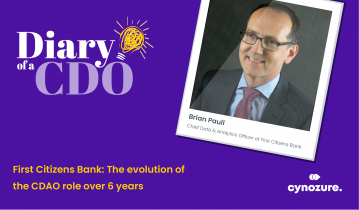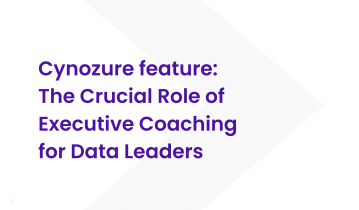2023 Predictions
It feels somewhat of an understatement to say 2022 has been a year of turbulence. Seldom before have we ever gone through 12 months of such change.
The United Kingdom had three different Prime Ministers. There’s been rampant inflation and economic chaos on a global scale. A cost of living crisis in many parts of the world, in part fuelled by Russia’s invasion of Ukraine, but also the tailwind impact of the pandemic and global supply chain challenges. The Queen died after 70 years as a global figurehead. What feels like a lifetime of events have been condensed into one year.
As all this was going on around us, the world of data continued to take centre stage in organisations across the public, private and not for profit sectors. A continued thirst for insight and understanding about what has come before and what lies ahead.
As we look ahead to 2023, these are some of the themes I expect to see in the world of data throughout the year.
Expertise in data will become an even more highly prized attribute
As data becomes more prolific and infiltrates more areas of business, organisations will need to pay more attention to how it’s stored, managed, and used. In 2022, we saw a surge in demand for data and tech experts, with data showing that more than two million vacancies in the sector were advertised over the last year, more than any other area of the UK labour market. Looking to 2023, it’s safe to assume that data experts will be in even higher demand, with their work increasingly clearly recognised as a key enabler of productivity and growth.
But will the salary bubble burst?
Salaries in data have been steadily climbing over the past five years, but have shot up even more sharply over the last year as demand for data skills grows and the talent pool shrinks – the average salary increase achieved when accepting a role over the past year was 22% in the UK and 12% in the US according to data from Harnham. This cannot continue indefinitely. Already, we are starting to see a slow down in the pace of this increase, and we can expect to see the bubble continue to deflate in 2023.
This is especially true when considering that much of this high-salary talent acquisition has already happened – which is why we have seen this salary bubble. Now these hires have been made and are settling into new (very well paid!) roles, we can expect to see the pace of salary increases slow, as organisations focus on the return on investment from this new talent.
This will come as companies finish a period of strengthening internal teams following a sustained period of growth and settle in on focusing on delivering return from that investment in people.
Data leaders will turn to alternative sources to help fill the skills gap
As has been widely documented throughout the year, there is a skills gap in data. One trend we should expect to see pick up in traction over the course of 2023 is data leaders looking to alternative sources to upskill their teams rather than waiting to make new data hires. This could include engaging with external data training providers such as Data Literacy Academy, introducing data apprenticeship programmes, collaborating with universities, and running internal data literacy training.
Data will be recognised as a vital tool to meet sustainability targets
One way or another, 2023 has to be the year that business – particularly big business – cleans up its act when it comes to sustainability. If this year’s Cop27 conference taught us anything, it’s that it’s time for urgent action rather than just talk. It is my fervent hope that this fact has infiltrated the minds of business leaders across the globe, and 2023 is the year we start to see real, tangible positive change.
When it comes to delivering on sustainability targets, data is a key ally. It can help business leaders to make evidence-based decisions that drive more responsible business practices, for example optimising supply chains to reduce waste and carbon emissions. As organisations large and small look to adopt more sustainable practices, it’s likely we will see them look to data-driven insights to do this most effectively.
Prioritisation of the highest value projects
Few of us have escaped the impact of intense economic pressures that 2022 has brought. Whether it be the cost of heating an office, or looking for ways to cut down on the weekly food shop, we’re all looking for ways to cut down on spending. From a business perspective, this means casting a critical eye over investments and prioritising the projects that deliver the highest value.
Any investments made will be done so with heightened scrutiny. With this in mind, the data projects that continue to be invested in will be those that deliver the most return on investment, either in the form of cost savings, increased operational efficiency, or more accurate decision making across the organisation.
Traditional sectors will embrace data
Over the past year, we’ve seen some interesting trends in the types of business we’re working with, and this is indicative of wider trends at play when it comes to the sectors that are embracing data. At Cynozure, we’ve seen a 230% increase in business from the legal sector, 168% in financial services, and 43% uplift in not for profit sectors. This is in addition to increased business in manufacturing, which we’ve not seen before.
The public sector has also ramped up its use of data, and we’ve seen various projects introduced that seek to improve how government departments use data, for example the data in health strategy – ‘Data saves lives: reshaping health and social care with data’ – that was published in June 2022.
Considering how these trends will continue into 2023, we’re likely to see traditional sectors such as manufacturing, government, and not for profit, continue to accelerate their use of data and increase the investment made in this area.
Newer tech vendors will be snapped up by established players
Over the past few years, we’ve seen the launch of many new vendors that offer more niche data services to organisations, for example Monte Carlo, which seeks to make data more accurate and reliable, data.world, which creates ‘data catalogue maps’ to give organisations an unified body of data-based knowledge, and Kleene, which combines data sources, standardises them into one language to create a central database for teams to work with. Now, as we come into the new year, it’s likely that many of these start-ups will be snapped up by bigger players looking to expand their offering and provide agile, scalable platforms to organisations. Expect to see a continued rise in merger and acquisition activity in 2023.








